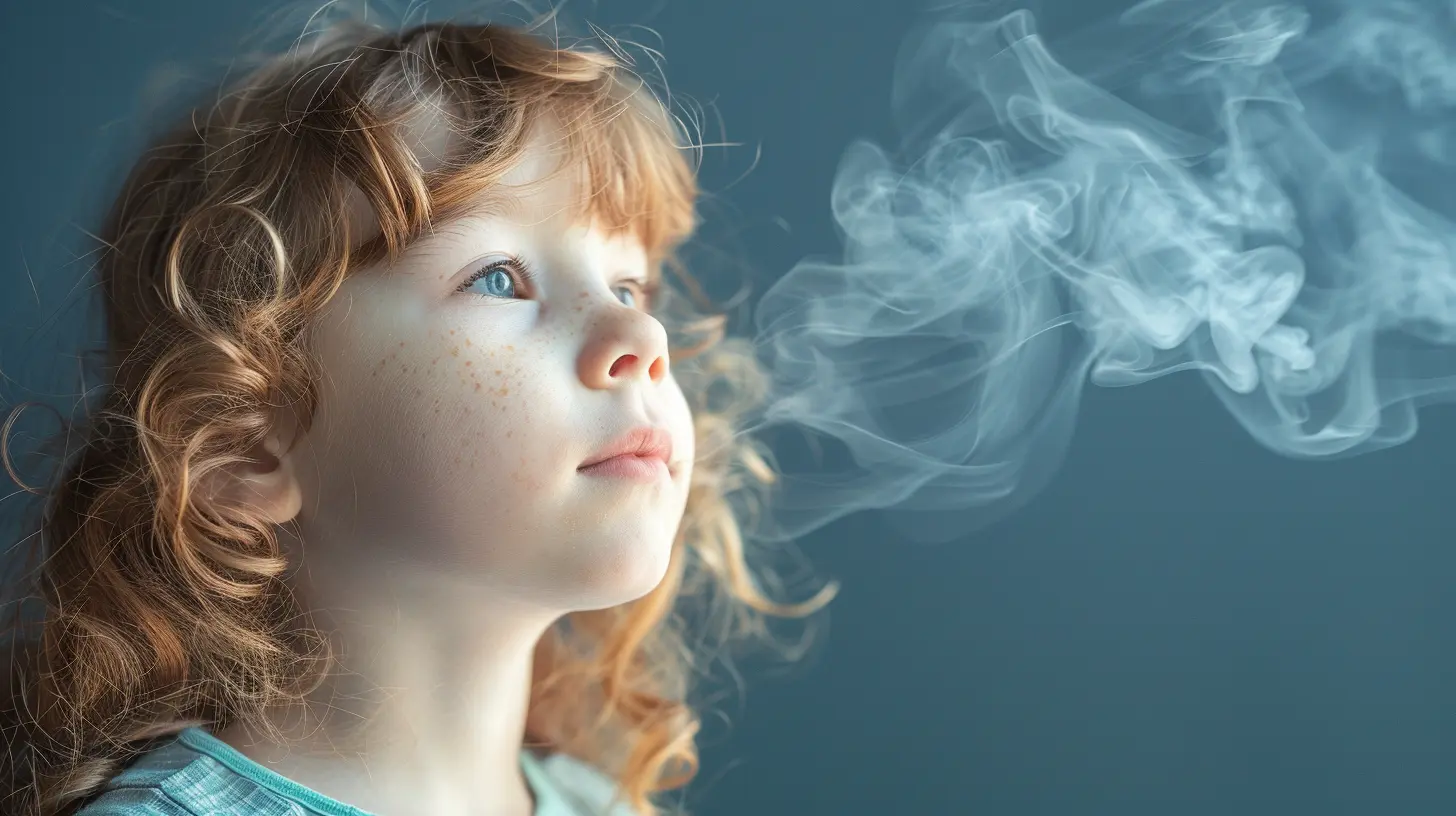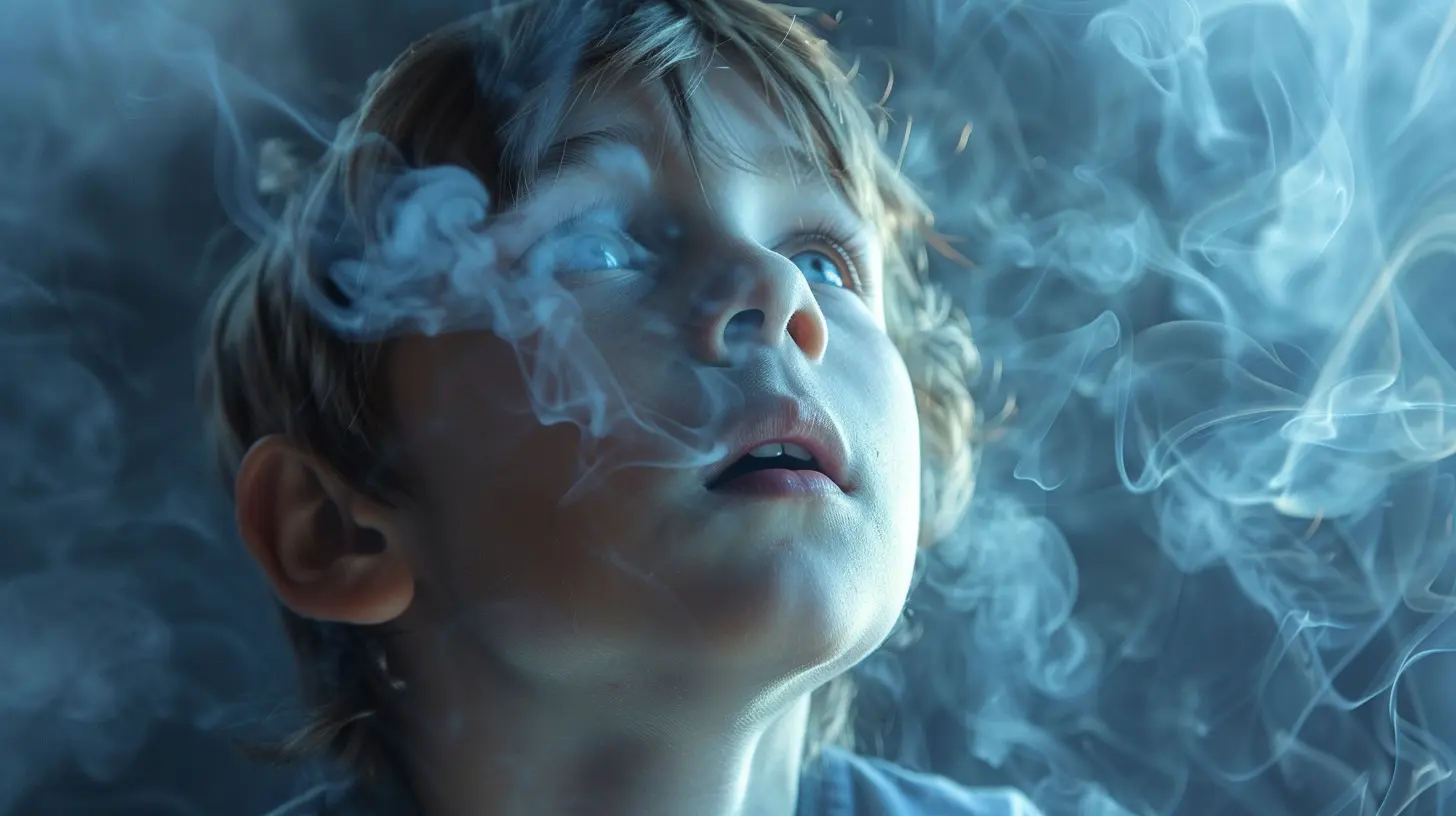The Effects of Second-hand Smoke on Children’s Health
10 November 2025
When we think of second-hand smoke, most of us instantly picture someone puffing away on a cigarette while a cloud of smoke drifts around. But here’s the twist—what many don’t realize is just how seriously that smoke can impact the health of our little ones.
Let’s pull back the curtain on second-hand smoke and take a good, honest look at how it sneaks into our homes, cars, and even parks—and how it affects the most vulnerable among us: our children.
What is Second-hand Smoke, Really?
Second-hand smoke (SHS) is more than just an unpleasant smell that sticks to clothes. It’s a toxic cocktail made up of mainstream smoke (exhaled by a smoker) and sidestream smoke (from the burning end of a cigarette, cigar, or pipe). This mix of over 7,000 chemicals—yes, thousands—includes hundreds that are toxic and about 70 known to cause cancer.Think of second-hand smoke like invisible smog. Just because you can't always see it doesn’t mean it’s not there—and it doesn’t mean it’s not dangerous. That’s especially true for children, who breathe faster than adults and have developing organs, making them super sensitive to pollutants.
Why Are Children More Vulnerable?
Picture a tiny set of lungs, still learning how to do their job properly. Now imagine those lungs being forced to filter air polluted with chemicals like formaldehyde, arsenic, benzene, and carbon monoxide. Sounds awful, right? Here’s why second-hand smoke hits children harder:- Smaller Body Systems: Their little lungs, immune systems, and hearts are still developing, so toxins do more damage.
- Faster Breathing Rates: Kids breathe more rapidly than adults, which means they inhale more of everything—good and bad.
- Less Control Over Environment: Unlike adults, children can’t just leave the room. If someone is smoking around them, they’re stuck in that situation.
It's similar to sending a toddler into a battlefield with no defense. The odds aren’t just unfair—they’re dangerously skewed.
Short-Term Effects You Might Notice Immediately
Second-hand smoke doesn’t take its sweet time to harm a child—it can start affecting them almost instantly. Here are some early signs you might notice:- Frequent Colds and Infections: Kids exposed to SHS tend to get sick more often. We’re talking runny noses, ear infections, sore throats, and worse.
- Asthma Attacks: If your child already has asthma, second-hand smoke is like gasoline to fire—it can trigger more frequent and severe attacks.
- Trouble Breathing: Even a short exposure can lead to wheezing, coughing, and shortness of breath.
These aren’t just minor annoyances. These symptoms can disrupt sleep, lead to school absences, and drain your family's well-being—physically, emotionally, and even financially.
Long-Term Health Consequences That Linger
Still wondering if second-hand smoke is really that harmful in the long run? Researchers and doctors have weighed in—and the evidence is loud and clear. Kids who grow up around second-hand smoke are at a greater risk of:- Chronic Respiratory Issues: Persistent coughing, bronchitis, and decreased lung function.
- Heart Disease Later in Life: Early exposure can kickstart damage to blood vessels and increase the risk of cardiovascular disease.
- Learning and Behavioral Problems: Some studies link second-hand smoke exposure to cognitive delays, attention disorders, and learning difficulties.
- Sudden Infant Death Syndrome (SIDS): For babies under one year, second-hand smoke significantly raises the risk of SIDS. It’s heartbreaking—and preventable.
Now, none of this is meant to make anyone feel guilty—but it’s crucial to know. When we have the facts, we can make better choices for our families.
The Hidden Dangers: Third-hand Smoke
Wait, third-hand smoke? Yep—it’s a thing.Third-hand smoke is the chemical residue left behind on surfaces like furniture, curtains, car seats, and even your child’s toys and clothes. It lingers long after the cigarette is out. And guess what? Kids touch everything and put it in their mouths. So, even if no one is actively smoking around your child, the danger can still be present.
Think of it as the “ghost” of second-hand smoke—quiet, sneaky, and just as toxic.
Where Is Exposure Happening?
You might think, “Well, I don’t smoke in the house, so we're fine.” But the truth is, second- and third-hand smoke can sneak in through:- Multi-unit housing (apartments, condos)
- Shared vehicles
- Public spaces
- Visiting homes of family or friends who smoke
- Parks, sidewalks, or playgrounds (yes, even outdoors)
Smoke doesn't respect boundaries. It travels through vents, open windows, even clings to clothing and hair. That “just one smoke outside” can end up right in your baby’s nursery.
Tips for Protecting Your Child
The good news? There’s a lot you can do to shield your little ones from the dangers of second-hand smoke—without lecturing or shaming anyone. It’s about boundaries, awareness, and creating safe spaces.Here’s how to start:
1. Set a Smoke-Free Home Rule
Make your home a no-smoking zone. Post a little sign by your door if you have to. Kindly ask visitors to step outside and far away if they need a smoke break. No exceptions—not even in the garage or “just by the window.” Smoke drifts!2. Embrace a Smoke-Free Car Policy
Even if the windows are down, second-hand smoke still builds up inside cars. Make it a rule—no smoking in the car, ever.3. Advocate at School
Make sure your child’s daycare or school is 100% smoke-free. Ask questions. Tour the grounds. Don’t be afraid to be “that parent.” After all, their health is on the line.4. Say “No, Thank You” When Visiting Smokers’ Homes
It can feel awkward, but it’s perfectly okay to decline visits if the environment isn’t safe for your child. Or suggest meeting outdoors in a smoke-free area.5. Educate Without Blame
If someone you love smokes, talk about it gently. Share your concerns about your child’s health. Most people don’t want to put kids at risk—it’s just about awareness.What If You Smoke?
Let’s be real. If you’re a parent who smokes, you might be reading this with a heavy heart. But here's the light in all of this: it’s never too late to make a change. You’re not alone, and every step counts.Things You Can Try:
- Designate smoke-free zones in your home and vehicle- Change clothes after smoking and wash your hands
- Smoke far away from doors, windows, and vents
- Try nicotine patches or other smoking cessation tools
- Talk to a doctor for guidance and support
Quitting is hard, no question. But it’s one of the most powerful gifts you can give your child—and yourself.
Inspiring Stories of Change
Many parents who once smoked around their kids have made the shift—and never looked back.Take Lisa, mom of two, who said: “I used to light one up out on the balcony. I thought that was good enough. But after my toddler started wheezing, I quit cold turkey. That was three years ago, and I’ve never felt more empowered.”
Or James, a single dad who started using nicotine gum and slowly transitioned away from cigarettes. “I didn’t quit just for me," he said. "I quit for her. Every time I tuck her in at night, I know I did the right thing.”
A Healthier Future Starts With Us
The effects of second-hand smoke on children’s health are serious—but they're also preventable. With a little courage, education, and support, you can protect your kids from something truly harmful. Whether you're a parent, a grandparent, a teacher, or just someone who cares—your choices make a difference.So let’s choose clean air. Let’s choose safe spaces. Let’s choose healthier futures—for our kids, and for generations to come.
All it takes is one small step in a smoke-free direction. You’ve got that power—and it starts today.
all images in this post were generated using AI tools
Category:
Childrens HealthAuthor:

Tara Henson
Discussion
rate this article
1 comments
Jinx McCarty
Second-hand smoke poses serious health risks to children's development.
November 16, 2025 at 4:53 AM

Tara Henson
Absolutely, second-hand smoke can significantly impact children's health, affecting their respiratory development, and increasing the risk of various illnesses. It's crucial to protect them from exposure.


